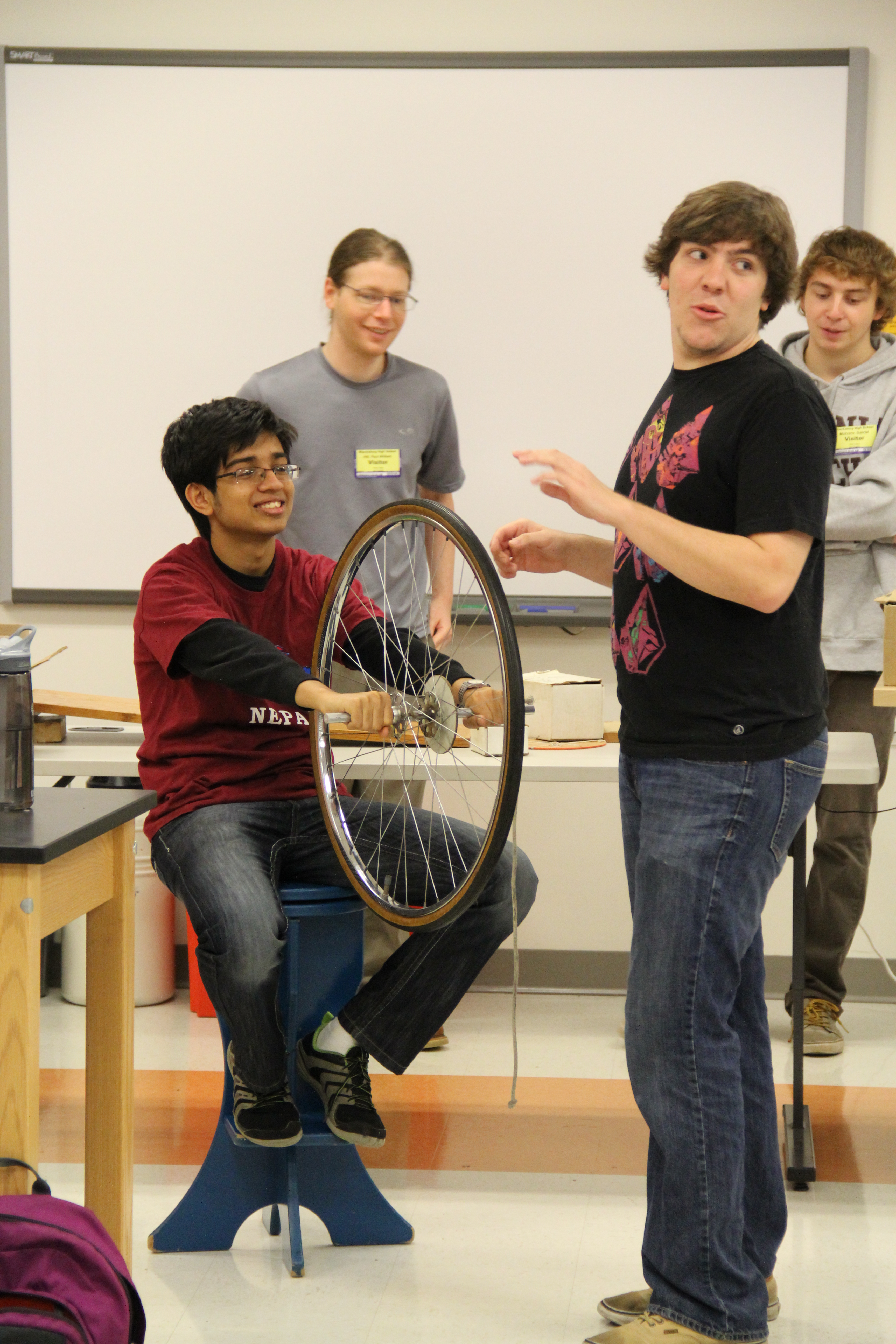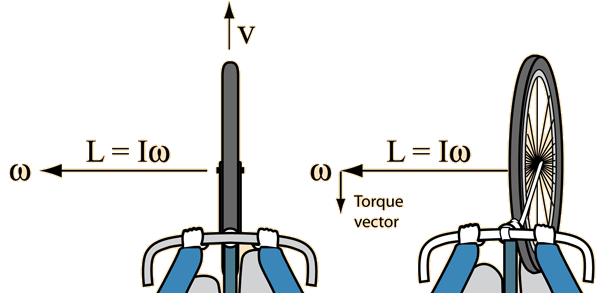Bicycle Wheel as a Gyroscope

This demo tends to be at a conceptually higher level than K-12 will address in their physics/physics-equivalent courses, but is neat nonetheless. This is a good introduction to angular momentum and can be shown before using the angular momentum stool.
To understand torque-induced precession, we must start by looking at the relationship between angular momentum and torque. Angular momentum is a vector quantity dependent on an object’s moment of inertia and angular velocity. Torque is also a vector quantity that represents the amount of force necessary to rotate an object along a given axis. These two quantities are directionally perpendicular to one another. The torque causes a change in direction of the angular momentum, but the magnitude remains unchanged. Thus, the bicycle wheel is able to spin gyroscopically, or precess, along its horizontal rotational axis in opposition to its vertical rotational axis.[1]
$$\tau=mgl=I\alpha={{\Delta L}\over {\Delta t}} $$
Where $\tau$ is the torque due to the weight of the wheel, $l$ is the lever arm of the bicycle wheel, and $\alpha$ is the new angular momentum caused by the torque.
Additional information on precession can be found on the Precession Wikipedia page.[2]
As previously mentioned, this demo is one of the more difficult ones to explain to a K-12 audience. It’d be best to avoid going in-depth about the math involved in order to keep the students’ attention. I like to relate the bicycle wheel to a spinning top, except we’re viewing it “sideways”. Using the spinning top mini demo (the Beyblade-esque one) wouldn’t hurt, just to give the students a visual example of something they’ve more than likely already seen before. While holding the bicycle wheel, I occasionally ask them, “what is this?” It’s a basic question, but I like to give them things that are easily answerable, especially if we’ll be dealing with a more difficult topic.
If the students are older, I briefly describe what angular momentum and torque are. I’ve found that describing torque simply as a “rotational force” or “a force to make something rotate” is sufficient. It may even be easier to focus/emphasize how these two quantities are vectors, and describe precession as the result of two vectors/directions being perpendicular to each other.
For younger students, I treat it more as a neat party trick. I rarely bring up this demo unless it is a caveat for the angular momentum stool. In this case, I briefly describe angular momentum, do the demonstration, and ask them to describe the motion of the wheel itself, as well as the motion of the system as a whole.
Tips
- Some Leading Questions
- "Have you ever spun a top before? If not, have you ever seen a spinning top? How/Why do you think it’s staying upright?"
- Good Demos Before/After
- Spinning Top
- Angular Momentum Stool
- (More Periphery:)Spinning Cup
- This addresses inertia and would only be a good tie-in if you are planning on touching on the moment of inertia of the bicycle wheel with respect to angular momentum.




